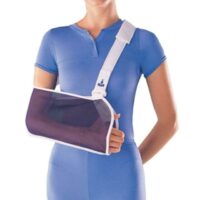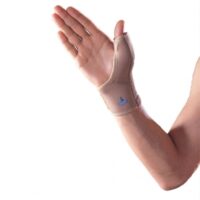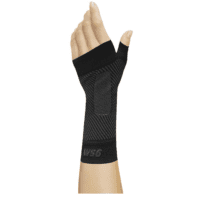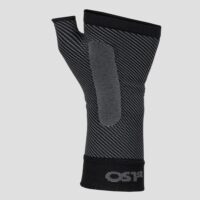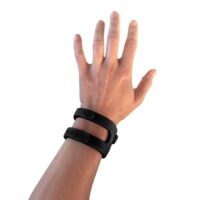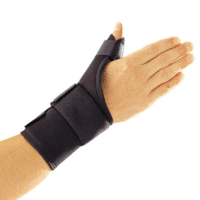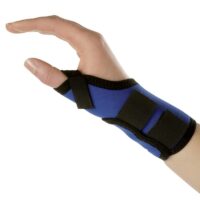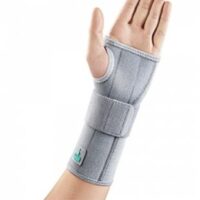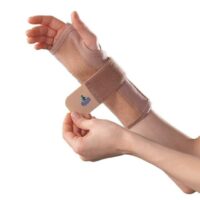Sprained Finger
Article by John Miller

Sprained Finger
A Comprehensive Guide
Sprained fingers are a common injury, particularly in sports like football, volleyball, cricket and basketball. This injury occurs when the finger is bent beyond its normal range of motion, leading to damage in the ligaments, especially the collateral ligaments on the side of the finger.
Recognising the Symptoms
A sprained finger manifests through various symptoms, which may include:
- Pain at the Joint: A sharp, aching, or throbbing pain in the injured area.
- Difficulty Bending the Finger: Stiffness and resistance when trying to move the finger.
- Swelling: Noticeable puffiness around the joint, indicating inflammation.
- Limited Mobility: Reduced range of motion in the finger.
- Finger Instability: In severe cases, the finger may feel loose or unstable.

The Role of Physiotherapy
Physiotherapy plays a pivotal role in the healing process of a sprained finger. The goals of physiotherapy include:
- Reducing Pain and Inflammation: Techniques like ice therapy, gentle massage, and ultrasound can be used.
- Restoring Joint Motion: Through specific exercises aimed at increasing flexibility and mobility.
- Strengthening Muscles: Focusing on the muscles of the hand and wrist to support and stabilise the affected finger.
- Improving Hand Function: Customised exercises to regain the ability to perform everyday tasks like writing, typing, and lifting.
It’s essential to seek a tailored recovery plan from a qualified physiotherapist for the best outcomes.
The Importance of Early Intervention
Recent studies have highlighted the significance of early intervention in the treatment of sprained fingers. Starting physiotherapy as soon as possible after injury can significantly enhance the healing process. Specific exercises, tailored to the individual’s condition and needs, are vital for optimal recovery. These exercises not only focus on the injured finger but also consider the overall strength and functionality of the hand and wrist.
Finger Sprain Treatment Options
- Rest and Elevation: Initially, resting the injured finger is essential. Activities that cause pain or stress to the affected finger should be avoided. Elevating the hand above heart level can help reduce swelling.
- Ice Therapy: Applying ice packs to the injured area for 15-20 minutes every few hours can assist in reducing swelling and pain. It’s important to wrap the ice pack in a cloth to avoid ice burn.
- Compression: Using an elastic bandage or finger tape can provide support and help in reducing swelling. However, ensure that the bandage is not too tight to prevent impeding blood flow.
- Pain Relief Medication: Over-the-counter pain relievers such as ibuprofen or paracetamol can help manage pain and reduce inflammation. Always follow the recommended dosage and seek advice from a healthcare professional.
- Gentle Range of Motion Exercises: Once the initial pain and swelling have subsided, gentle range of motion exercises can be beneficial. These exercises help maintain flexibility and prevent stiffness in the finger.
- Strengthening Exercises: As healing progresses, exercises to strengthen the muscles around the finger and hand should be introduced. These are crucial for restoring function and preventing future injuries.
- Physiotherapy: A physiotherapist can develop a personalised exercise programme and provide treatments like ultrasound or hand therapy techniques. They can also advise on proper finger splinting and guide the rehabilitation process.
- Functional Taping: Taping the finger can provide support during activities as the finger starts to heal. This assists in returning to normal activities while minimising the risk of re-injury.
- Massage Therapy: As the finger heals, massage therapy can be utilised to improve circulation, reduce scar tissue, and enhance mobility.
Prevention Tips
Prevention is always better than cure. Some tips to prevent finger sprains include:
- Proper Warm-up: Before engaging in sports or physical activities.
- Use Protective Gear: Such as gloves or taping in sports.
- Mindful Movement: Avoid putting undue stress on the fingers during activities.
Conclusion
Professional care is crucial for an effective recovery from a sprained finger. A physiotherapist can provide professional guidance and a personalised treatment plan to ensure a swift and full return to functionality.
What to Do?
If you suspect a sprained finger, don’t delay in seeking professional help. Visit a physiotherapist for a comprehensive evaluation and a personalised treatment plan. Early intervention and physio care are key to a speedy and effective recovery.
Related Articles
- Thumb Sprain – Offers insights into the treatment and recovery of thumb sprains, a condition related to finger injuries.
- Hand & Wrist Pain – Discusses various conditions affecting the wrist and hand, including finger sprains.
- Wrist Tendinopathy – Provides information on wrist tendinopathy, which can be relevant for readers understanding wrist and finger joint issues.
- Wrist Fracture Recovery – Details the recovery process for wrist fractures, which can be informative for understanding related injuries in the hand.
- Volleyball Injuries – Covers common injuries in volleyball, including finger sprains, offering a sports-specific perspective.
- Carpal Tunnel Syndrome – While focusing on carpal tunnel syndrome, this article provides a broader understanding of hand and wrist conditions.



